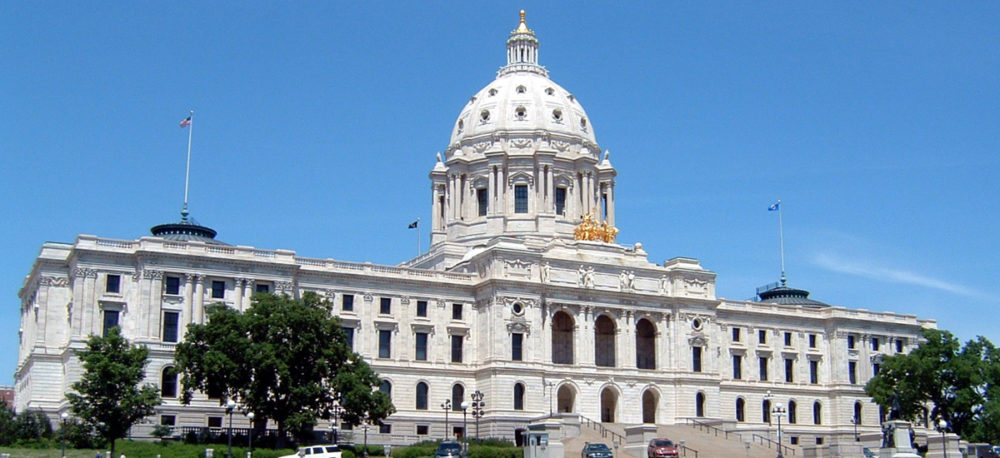Earlier this month the Xcel Nuclear Plant Costs Bill (SF3504/HF3708) passed the Senate but failed to pass through the Minnesota House. The bill created a system of approving nuclear plant repair costs for Xcel Energy that would have circumvented the normal process of the Minnesota Public Utilities Commission (MN PUC) and left ratepayers to shoulder potentially excessive costs of keeping Xcel’s nuclear plants running.
Xcel’s two nuclear power plants are a key component of its goal to reduce carbon emissions company-wide by 60 percent (below 2005 levels) by 2030. Just last week, Xcel announced it has already cut carbon emissions by 35 percent, and is on track to achieve its 2030 goal according to its newly released Corporate Responsibility Report.
Xcel is preparing to file their next resource plan with the MN PUC in 2019, they are currently talking to stakeholders about their vision to reduce carbon emissions 80 percent by 2030 for the region. This vision is dependent on Xcel continuing to run their two nuclear power plants through their licensing periods in the early 2030s.
So now that the Xcel nuclear bill didn’t pass, what’s next, and what does this all mean for Minnesota’s clean energy future?
Trying to keep Xcel’s nuclear fleet in the black
Xcel’s nuclear fleet is struggling to stay profitable in the face of cheaper alternatives (like renewable energy and natural gas) and looming upkeep costs. Xcel estimates it will need at least $1.4 billion dollars in repairs over the next 17 years for its Monticello and Prairie Island nuclear plants. To provide certainty that Xcel would be able to recover those costs from ratepayers, they introduced legislation that would have allowed the company to get upfront approval from the PUC for its future nuclear expenses instead of approval after those investments have been made (how it works currently). The legislation would have provided certainty for Xcel that they would be able to recover these maintenance costs from ratepayers.
This is a bad deal for ratepayers because the legislation dilutes the PUC’s authority, and attempts to bypass the PUC’s current process for reviewing costs to determine if they’re prudent. That’s why UCS opposed the bill: it was an attempt to avoid the existing regulatory review process and shift financial risk from Xcel’s shareholders to ratepayers. This is not the first legislative attempt to dilute the power of the MN PUC.
Maintaining the current process for approving costs is important
Xcel is due to file their next Integrated Resource Plan (IRP), also known as their 15-year business plan, in February 2019. The IRP process allows for a comparison of electricity options to make sure consumers are getting the most bang for their ratepayer bucks. The IRP process is where Xcel will detail how they plan to generate and supply power to their customers over the next 15 years, including any expected expenses to keep its nuclear plants up and running.
A successful IRP includes evaluation of existing resources, a robust economic analysis of different supply-side and demand-side options under a range of scenarios and assumptions, including future environmental costs and fuel prices, opportunities for stakeholder engagement, adequate reporting requirements, and a robust set of criteria of which to base approval or denial of utility plans to spend ratepayer dollars.
It’s important to keep the current process because it protects ratepayers from excessive charges. By separating out the nuclear plant upkeep costs, we’re not comparing them to other options that would maintain a reliable and affordable energy supply for less cost to ratepayers. The legislation would have pre-approved these costs, meaning any cost overruns due to mismanagement by Xcel would have been automatically passed on to ratepayers. To protect Minnesota consumers, it’s important to keep the robust IRP process and maintain the PUC’s authority to scrutinize Xcel’s expenditures.
With Xcel’s nukes in jeopardy, what does this mean for its carbon reduction goals?
In 2016, the MN PUC approved Xcel Energy’s 15 year resource plan, which prioritized renewable development. Xcel Energy has led the charge in the powerful wave of utility announcements to cut carbon emissions and invest in clean energy. Xcel has stated that its nuclear plants play a critical role in achieving the company’s clean energy targets, and its commitment to reduce carbon emissions.
However, the fate of Xcel’s nuclear plants is unknown. Markets are constantly evolving and it’s Xcel’s job to adapt and remain profitable under changing circumstances. With adequate time to prepare, there are a variety of carbon-free resources that can step in (solar, wind, storage) if Xcel is committed to its carbon goals and undertakes thoughtful and robust planning to make sure its investments are smart ones.
Regardless of the near term, Xcel’s nuclear plants are currently scheduled to close in the early 2030s—and we need a plan for a reliable, affordable, and low-carbon energy future for Minnesota without these nuclear plants.
MN’s clean energy future
Minnesotans want clean, affordable energy, and the PUC is critical for ensuring their interests are reflected in Xcel’s future energy investments.
Xcel Energy attempted to gain security for its shareholders ahead of its 2019 Integrated Resource Plan (IRP). Minnesota ratepayers deserve the intensive planning of the IRP process, which ensures billions of dollars of repairs are made in the most prudent and efficient manner.
We expect public engagement around the IRP to occur in the summer and fall of 2019. We look forward to working with Xcel Energy and other stakeholders to develop a comprehensive IRP that puts Xcel’s clean energy goals front and center while protecting Minnesota Consumers.

